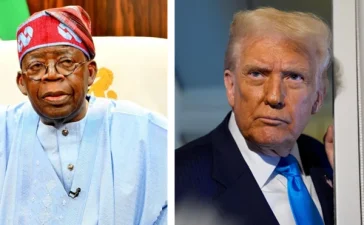The merger by President Bola Ahmed Tinubu of the Federal Ministry of Tourism and the Ministry of Arts and Culture to become Federal Ministry of Art, Culture, Tourism and the Creative Economy is one that has been described by stakeholders in the sector as a good step in the right direction.
Indeed, the decision of the president to take such a bold move signals a commitment to drive the Nigerian brand and unlock the economic value of a thriving tourism Industry for the country as the new ministry no doubt will oversee a wide range of activities aimed at promoting Nigeria as a premier tourist destination thereby Consolidating a vibrant Nigerian Brand.
By integrating arts, culture, and tourism, the government is indeed creating a cohesive strategy that showcases Nigeria’s rich heritage and diverse cultural offerings.
Also, this synergy will not only enhance the visitor experience but also foster sustainable economic growth through tourism-related ventures.
This move indeed is expected to consolidate resources and as well amplify Nigeria’s voice in the international tourism market. By uniting the diverse elements of art, culture, tourism, and the creative economy, the merged ministry is expected to streamline efforts, enhance collaboration, and as well leverage shared expertise.
Experts say this comprehensive approach will facilitate the development of innovative marketing strategies, showcase Nigeria’s rich cultural heritage, and attract a global audience, ultimately positioning Nigeria as a vibrant and competitive destination, capable of drawing international tourists and fostering economic growth through cultural exchange and tourism.
However, with the increased responsibilities accompanying this merger, it is essential for the President to appoint a leader who possesses the requisite expertise, relevant portfolio, and a visionary outlook to guide the ministry effectively.
The head of this newly formed ministry must be adept at navigating the intricate dynamics of merging tourism with cultural initiatives as this leadership role demands a deep understanding of both sectors, as well as the ability to harmonize their objectives to create cohesive strategies.
Also, the appointed leader must be skilled in fostering collaboration among various stakeholders, including government agencies, local communities, and private sector partners with a proven track record in managing complex projects and implementing innovative solutions that leverage Nigeria’s unique cultural heritage and natural attractions.
Furthermore, it is vital for the leader to prioritize sustainable tourism practices that not only promote economic growth but also protect and celebrate Nigeria’s diverse cultural landscape by ensuring that tourism initiatives are aligned with cultural preservation, thereby attracting both local and international tourists who seek authentic experiences.
Ultimately, the right leadership will play a crucial role in shaping a vibrant tourism narrative for Nigeria, positioning the country as a premier destination that showcases its rich traditions, artistic expressions, and breathtaking landscapes.
In conclusion, this strategic merger, under strong and capable leadership no doubt sets the stage for a transformed Nigerian tourism landscape, creating a vibrant sector that benefits all stakeholders as well as highlights the country’s unique offerings to the world.
Indeed, the answer to the question “who wears the hat” is clear to Stakeholders as well as observers in the tourism sector. It is only hoped that the President will take the necessary steps, as the situation calls for decisive action.







